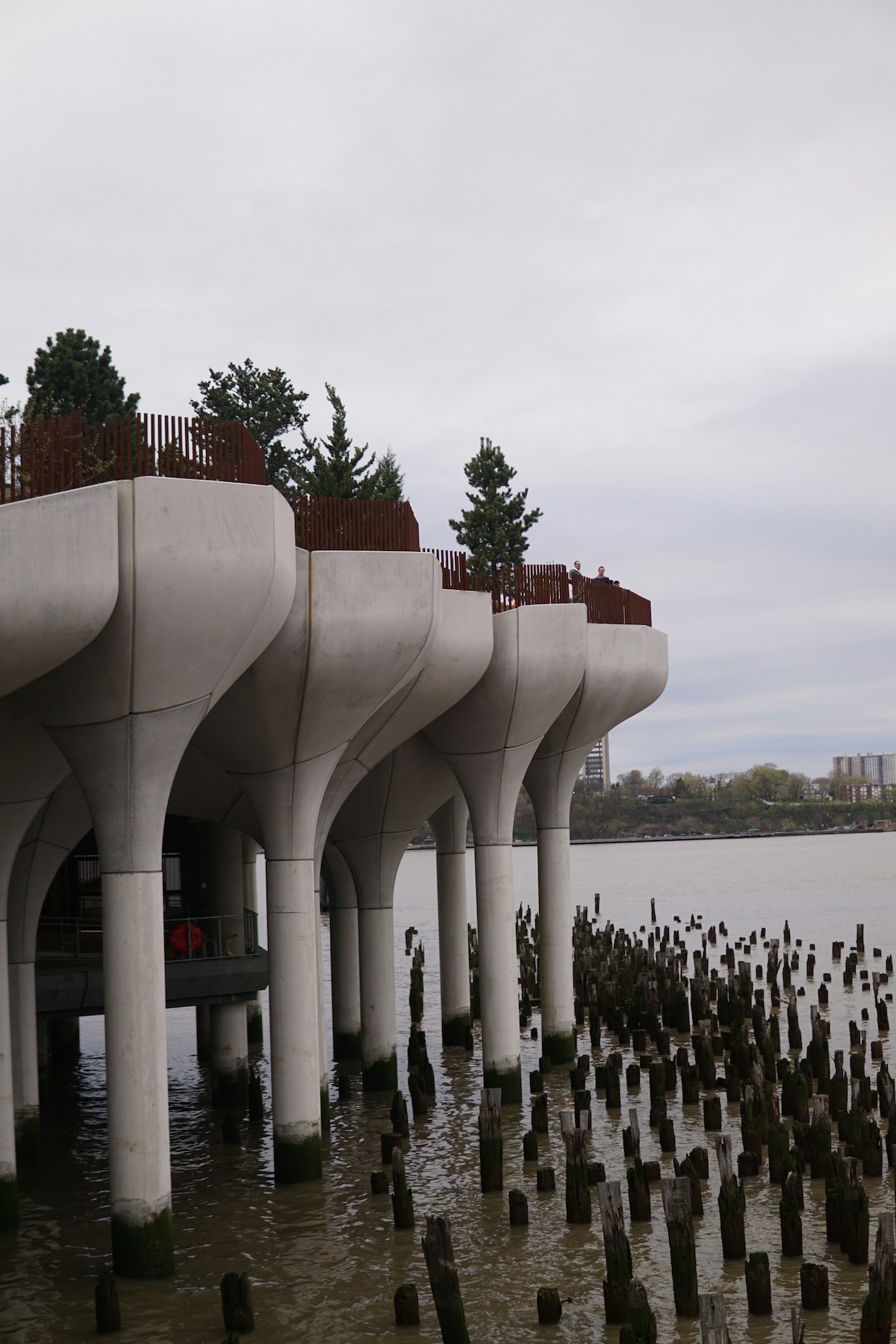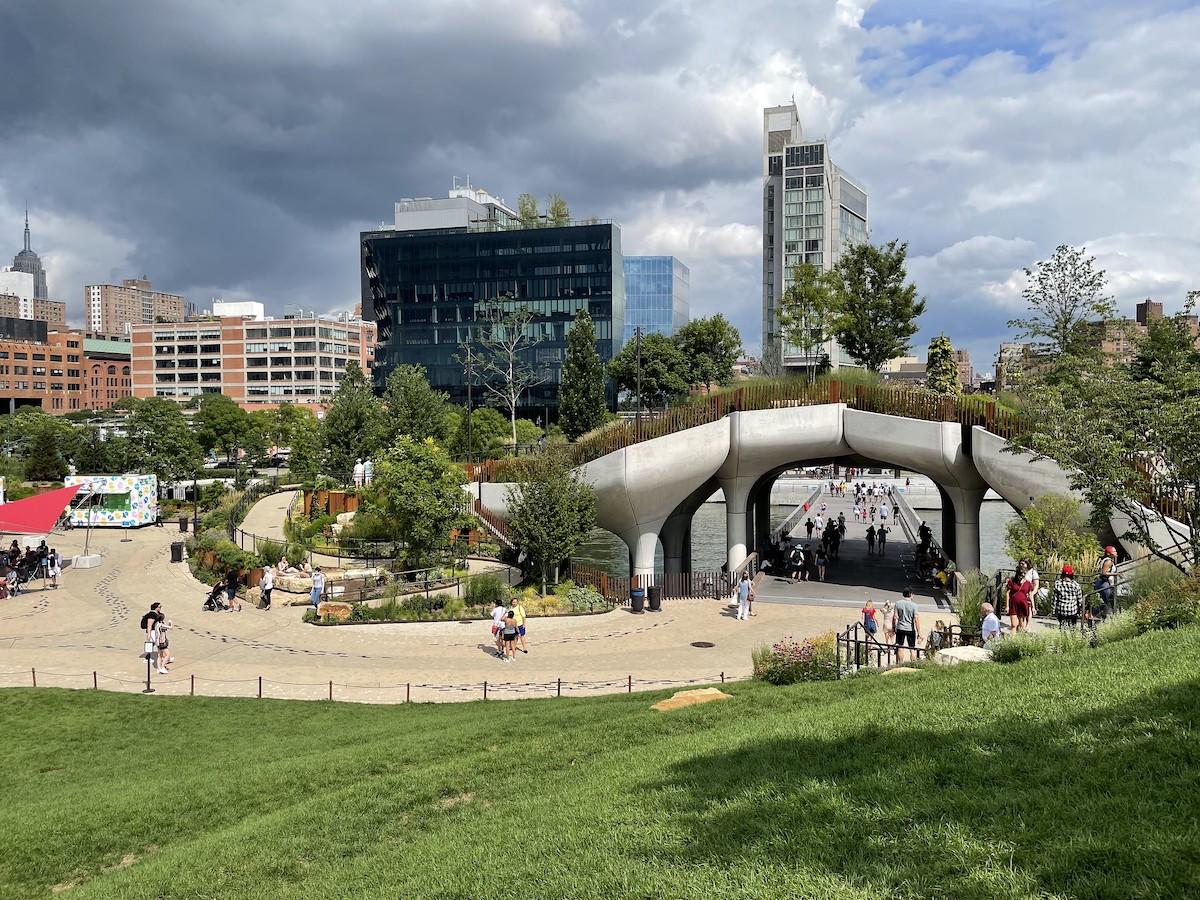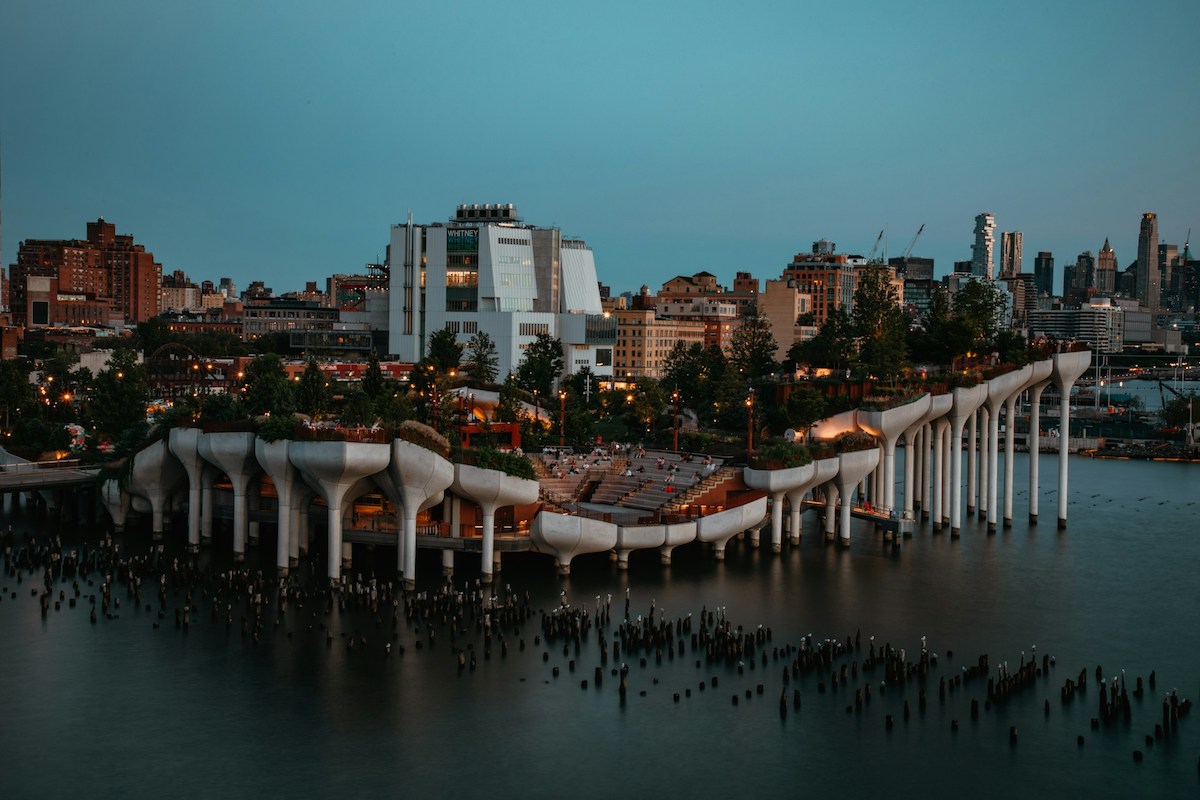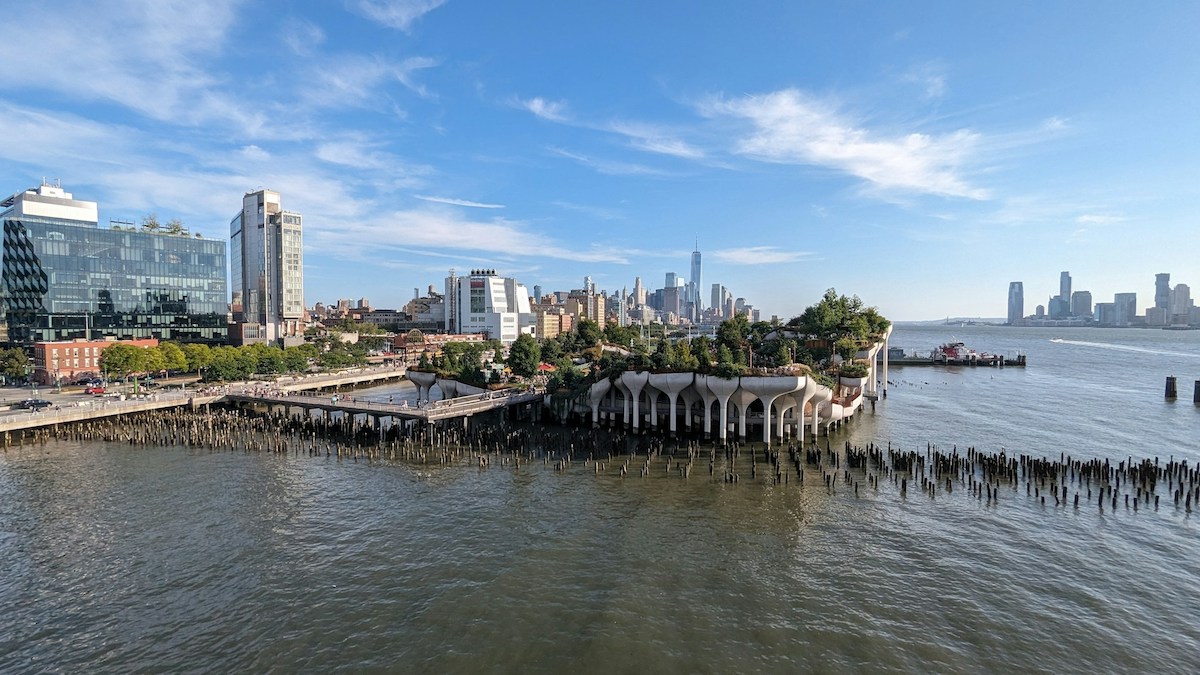If you walked along the Hudson River in Manhattan adjacent to the West Village and Meatpacking Districts in the Spring of 2020, you might have noticed something odd emerging from the water: a mass of 280 ivory-colored tulip-shaped columns, some taller than others to create an undulating landscape of rolling hills. Or maybe you saw it after the flora had been put in place where it looked like a small forest etched with paths had been placed on the tulip-like structures, as if some magical island had suddenly materialized from the mind of a very creative child.
Welcome to Little Island, which opened in 2021, much to the fanfare of locals and visitors alike. For the first few months of Little Island’s existence, it was so popular that one needed a reservation just to walk across its footbridge onto the island. These days, though, no reservation is necessary.

So before you make the journey across one of the two wooden footbridges onto this magical island, here is a guide, a primer, if you will, on all that you need to know about this amazing attraction in New York City.
The history of NYC’s Little Island
If you haven’t been to New York City in about two decades, the west side of Manhattan looks a lot different. The strip of land between the Westside Highway and the Hudson was a no-go zone, a barren swath of land dominated by industrial warehouses and chain link fences where homeless people lived and drug addicts got their fix.
But starting in the first few years of this century, the area has been totally revamped and now there is a verdant park here along with several piers that offer recreation and sports facilities, great views, and even a sandy beach.
In the space where Little Island sits (or floats) now was historic pier 54. Famously, Little Island was the docking point for the R.M.S. Carpathia, which brought survivors of the Titanic to land for the first time in 1912.
A different kind of public space
The pier was damaged beyond repair by Hurricane Sandy in November 2012. That’s when Barry Diller, founder of AIC Media and husband of fashion designer Diane von Furstenburg, comes in. A year later, Diller proposed a new pier, but something wildly different—a total reimagining of public space; something the world had not yet seen. He put up the funding and the went to work.
He hired British designer Thomas Heatherwick—famous in New York for creating the much dreaded “Vessel” at Hudson Yards—and the landscape architecture firm MNL. Together, they came up with something astounding.

Why you should visit Little Island
When it opened in May 2021—$260 million later—the 2.4-acre island was eye candy for anyone who set their sights on it and smile-inducing for those who stepped foot on it. The island, after all, is not just a verdant piece of land in the Hudson River dotted with maples, dogwoods, and honey locust trees. It’s so much more.
Highlights of Little Island Park
Ampitheater & views
For starters, there are pathways that wind through the island, leading visitors up small hills to viewing platforms that offer a 360-degree panoramic view of the city and its iconic skyline.
Then there is the 687-seat amphitheater, strategically positioned to let attendees of performances see the sunset across the Hudson River to New Jersey. There are regular evening performances here—some are free; others require the purchase of an affordable ticket—that have included operas, modern dance, classical piano, and folk music, among other performances.
The Glade
If you want to go smaller, there’s a second performance area, called the Glade, located at the base of a sloping lawn (turn to the left after you enter) where there are small-scale performances and lectures, ideal for children’s events and talks on topics such as New York City history. To time your visit with a performance, check the website’s event page.

Where to eat on Little Island
Food trucks
If your stomach starts to rumble while you’re exploring Little Island, they’ve got you covered. In the plaza, you’ll find a few food trucks and carts serving up warm-weather, comfort food favorites like hot dogs, fries, nachos, sandwiches, and salads. There’s even a kids menu.
Oyster market
One of the latest food-and-beverage developments on the island is an oyster market, where you can slurp down freshly-shucked oysters while a performance is happening at the amphitheater. Attendance is free—you just pay for the oysters. The oyster night market takes place in the summer.
Pier 57
If you want a more diverse menu of food, head over to Pier 57, located just north of Little Island. In addition to housing a James Beard-sanctioned food hall, where you can munch on excellent tacos, Thai food, Korean dishes, and Middle Eastern fare, among other delights, there is also City Winery— a restaurant, wine bar, and a concert venue space.
Pro tip: walk the length of Pier 57 in the interior and take the stairs or the elevator to the top floor. There you’ll find a relatively off-the-radar rooftop park that offers stunning views of Little Island with the iconic downtown Manhattan cityscape behind it.





